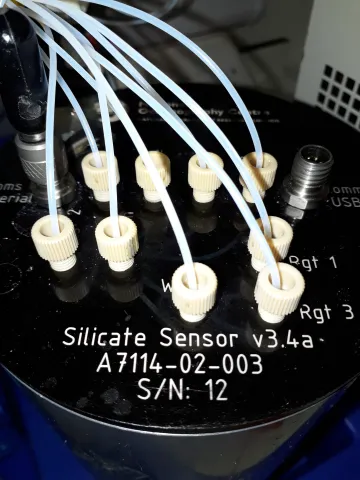
Dissolved silica (DSi) is a macronutrient and is required by marine life including diatoms, some sponges, radiolarians, silicoflagellates, some species of choanoflagellates and picocyanobacteria. While DSi occurs at much larger concentrations by comparison with dissolved phosphorus for example, the development of an in situ device to measure it is challenging due to the large range of concentrations found in the environment – ranging from <0.1–0.6µM in the euphotic zone in the tropics and subtropics to 50–100µM in deep ocean water, and sometimes more than 200µM in rivers.
The reduction of molybdosilicic acid by ascorbic acid to a blue colour of intensity proportional to silicate concentration is used as the basis for the silicate sensor. The oxalic acid is used to suppress the phosphate interference, while the ascorbic acid reduces the molybdosilicic acid.
It is a lab-on-chip wet-chemical analyser, and like all instruments based on this platform, is designed to work at full ocean pressure.
Clinton-Bailey, G.S., Beaton, A.D., Patey, M., Davey, E., Fowell, S., Martin, A., White, S.N., Birchill, A.J., Mowlem, M.C. (2019) ‘Lab-on-Chip’ Sensor for in Situ Determination of Silicate in Natural Waters. In Goldschmidt Abstracts, p634. https://goldschmidt.info/2019/abstracts/abstractView?id=2019004010